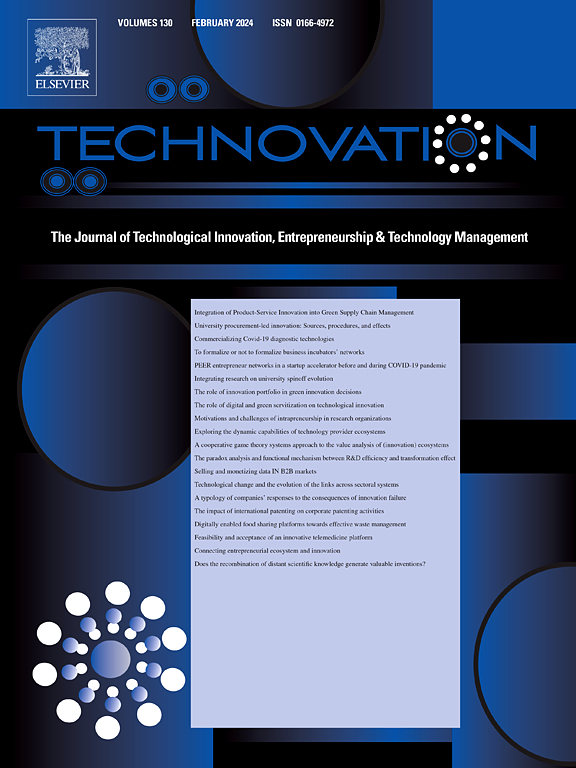Exploring the impacts of generative AI on artistic innovation routines
IF 11.1
1区 管理学
Q1 ENGINEERING, INDUSTRIAL
引用次数: 0
Abstract
Generative AI (GenAI) is now being used in many computer-based knowledge works by various human–AI collaborations, as a major recent technological shift. However, micro-level research of GenAI impacts is rare. Moreover, whilst the creative industries are early adopters and heavy users of GenAI, there is a lack of research in this domain. To bridge these gaps, this study implemented an inductive approach to evaluate the application of GenAI in artistic innovation based on a detailed case study in a show production firm making use of company documents, interviews, and observations. The theoretical lens of routine dynamics reveals the nature of the impacts. As both a working tool and a communication facilitator, the collective application of GenAI as the working medium led to the ostensive sequence change of routines as simultaneous exploration of problems and solutions for creativity and innovation. We provide two main theoretical implications. First, individual and collective application of GenAI as both digital working tool and medium in artistic creation can improve productivity of creation and iteration. Second, such human-AI collaboration results in the routine adaptation of ostensive aspect by changing the path and interface of routine clusters and mixtures the sequential routines within creation with local events rather than systematically transforming routines.
求助全文
约1分钟内获得全文
求助全文
来源期刊

Technovation
管理科学-工程:工业
CiteScore
15.10
自引率
11.20%
发文量
208
审稿时长
91 days
期刊介绍:
The interdisciplinary journal Technovation covers various aspects of technological innovation, exploring processes, products, and social impacts. It examines innovation in both process and product realms, including social innovations like regulatory frameworks and non-economic benefits. Topics range from emerging trends and capital for development to managing technology-intensive ventures and innovation in organizations of different sizes. It also discusses organizational structures, investment strategies for science and technology enterprises, and the roles of technological innovators. Additionally, it addresses technology transfer between developing countries and innovation across enterprise, political, and economic systems.
 求助内容:
求助内容: 应助结果提醒方式:
应助结果提醒方式:


